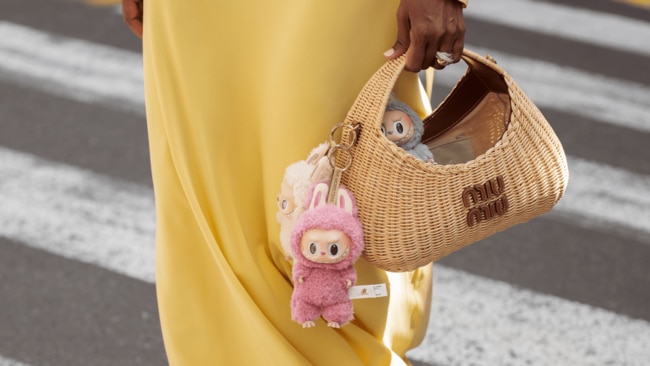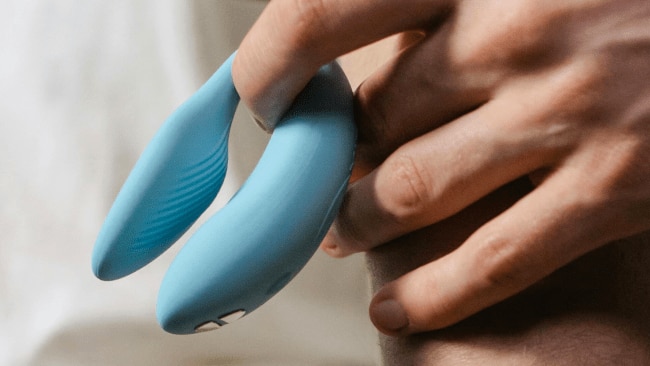Why are grown adults obsessed with Labubus? An investigation
What's behind the plushie pandemic?

Lifestyle
Don't miss out on the headlines from Lifestyle. Followed categories will be added to My News.
It seems the age of the plushie is upon us, with a new breed of mature buyers behind a spike in soft-toy sales. But the big question is: why? Tanya Hennessy does a deep dive.
Something happened last year, out of the blue. I don’t know how or why, but I started to collect… Jellycats.
Jellycats, if you’re not familiar, are overpriced plush toys that take the form of inanimate objects with faces (think: a boiled egg wearing sunnies or a rabbit who looks both dissociative and constipated). Jellycats are my sole reason for living right now – I’m obsessed – and I’m not sure if I should be at the age of 39.
I genuinely don’t know what came over me. I’ve never really been a collector of things. I mean, I had a few Tazos in primary school in the ’90s, maybe three troll dolls, and then weirdly went through a phase of collecting stamps for about 30 minutes. But Jellycats have got me over a barrel.

I’m pretty sure that I was once a slightly interesting and somewhat charismatic woman. Now I’m on Facebook Marketplace fighting with a 13-year-old over the price of a used pickle plushie. I have more stuffed toys today than I ever did as a child – and it doesn’t look like I’m alone.
According to recent data released by global market research firm, Circana, the toys-for-adults market is now estimated to be worth two billion dollars in the UK. One in five children’s toys are sold to adults buying them for themselves. Yes, you read that right. One in five.
Plus you’ve got McDonald’s bringing back the ‘adult’ Happy Meal, Lady Gaga snapping pictures with her bed full of Squishmallows and grown-ups on social media sharing their collections of Labubu dolls and Sonny Angels.
And that’s all in addition to the fact that, in countries like Japan, people carry dolls and plushies around with them to work, and Labubus and ‘purse pals’ (custom-made miniature plushies) are on handbags everywhere.

So why can’t I buy soft toys without feeling like I shouldn’t? I asked clinical psychologist, Dr Rebecca Ray, for her thoughts on why adults are flocking to buy plush objects, and it turns out there’s more to this soft-toy trend than meets the eye.
“We’re more aware of global trauma than ever before and we can’t easily escape that awareness because of the internet, so there’s an increased need for comfort and nostalgia. Stuffed toys offer a sense of security and familiarity by tapping into those childhood feelings of finding safety in soothing objects,” explains Dr Ray. “Plush toys act to have a calming influence on our nervous system, the same way that other ‘adult’ self-soothing items do, like weighted blankets and noise-cancelling headphones. They can help reduce anxiety and increase feelings of connectedness.”
As well as Jellycats and other plushies acting as emotional-support items for the overwhelmed and frazzled masses, Dr Ray adds that the soft-toy revolution could also be a part of “a big shift in attitudes towards self-care”. She explains: “There’s less stigma around adults embracing joy and comfort in non-traditional ways, and if that means buying a cuddly toy, then why not?” Couldn’t agree more.
The world is hard and harsh. If buying a fuzzy croissant with a smiley face helps, buy them all. We need lightness and fun and joy now more than ever. Been coveting that cute cauliflower Jellycat with the tiny little legs? Don’t be bashful about getting it. Everyone else is. The more we see adults buying and enjoying toys in our social media feeds and day-to-day lives, maybe the more OK with it we’ll feel. So when you see me in Coles with a Jellycat in hand, don’t judge.
More Coverage
Originally published as Why are grown adults obsessed with Labubus? An investigation




